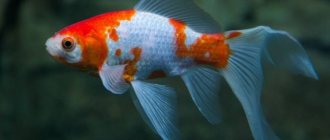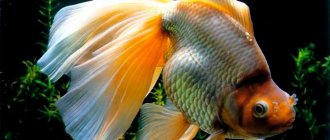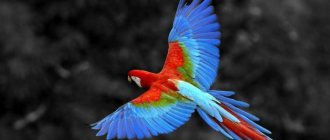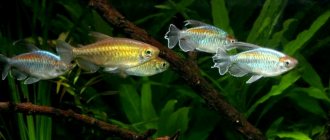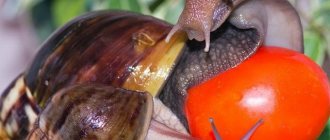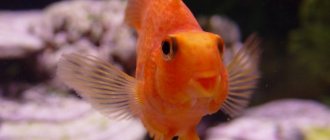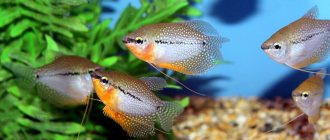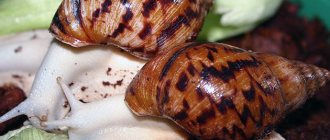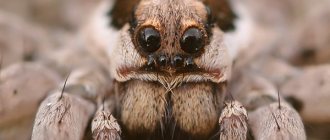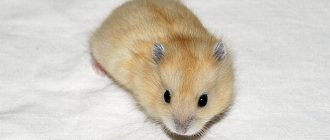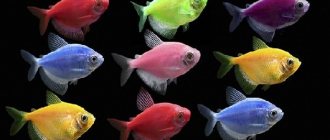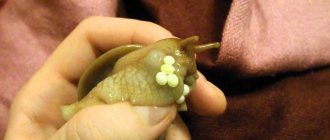Description and types
There are many varieties of these fish. Among which:
- Comet
- Pearl
- Oranda
- Heavenly eye
- Lionhead
- Pecilia.
There is a wide variety of goldfish of natural and artificial origin.
Each of the individuals has its own characteristics. For example, the celestial eye has an egg-like body and bulging eyes that look upward. The pearl looks like a ball. Oranda has cap-shaped growths on its head and elongated fins. The comet has a classic body structure and a forked tail. The lionhead, as its name suggests, has an unusual head. Its head is large, surrounded by dense growths. Pecilia has the smallest head, and its body is shaped like a diamond.
However, all varieties of goldfish have common features. Their color varies from reddish-pink to light amber and snow-white with a touch of gold. Usually the body is slightly pressed from the sides. The average size can be from 5 to 10 cm. With good care and maintenance, the pet grows to 14-16 cm
Individuals that live in nature or private ponds grow up to half a meter.
These fish are not aggressors. They behave quite calmly in their home pond. Occasionally they can lightly bite their brothers. They do it delicately, not dangerously. Goldfish in an aquarium are considered long-lived. They can live as a pet for about 14-16 years.
It is recommended to buy goldfish in specialized pet stores. It is better to give preference to two individuals of different sexes. Life will be more fun for them together. You cannot take fish from a tank that contains at least one sick fish. It's easy to spot. She's slow. Its color has faded. Deviations in behavior and spots on the body are possible.
Disease Prevention
Goldfish are very delicate creatures that can die if the proper conditions are not met. The presence of a disease in a fish can be determined by the degree of its mobility, appetite, shine and brightness of scales.
You should also pay attention to the dorsal fin. If it does not stay upright, then the fish’s health is not all right.
Also, the disease may be indicated by a plaque that suddenly appears on the body.
Sick fish should be immediately isolated from healthy fish. It is best to place it in a large aquarium with slightly salted water.
It is recommended to maintain a concentration of 20 g of salt per 1 liter of clean water. The water temperature in the aquarium for a sick goldfish should not exceed 18°C.
Also learn about the intricacies of raising parrotfish in your aquarium.
In such conditions, you need to keep it for three days, while replacing the water solution daily.
The most common diseases in goldfish are:
- Cloudiness of scales and scabies. With such symptoms, it is necessary to immediately replace all the water in the aquarium.
- Individuals develop white threads in a perpendicular direction to the body - hyphae . These are signs of dermatomycosis or a common fungus.
- White, gray or pink tumors on the body and fins . This is how fishpox manifests itself. Such neoplasms do not pose a threat to life, but they spoil the beauty of the fish. Unfortunately, fishpox cannot be cured.
- A terrible threat for goldfish is dropsy followed by sepsis. You can save the fish only at the very first stage of the disease. The sick individual must be moved to running clean water and bathed in a solution of potassium permanganate every other day for 15 minutes.
- Inflammation of the stomach . It can be caused by poor food or prolonged feeding of dried daphnia, gammarus and bloodworms.
Did you know? Goldfish are extraordinary gluttons.
They will eat as long as food is given to them. Overeating is the most common cause of death. Therefore, you should not give in to the energetic behavior of fish, which may lead you to believe that they are still hungry.
What kind of aquarium is needed for a goldfish?
The ideal vessel for fish should be voluminous. Each individual needs at least 50 liters of water. The ideal house for two goldfish would be an aquarium with a volume of 100-150 liters. If there is not enough water, pets may die.
Spacious, rectangular-shaped aquariums are best suited for goldfish.
When choosing a shape, you should give preference to a rectangle. A rectangle slightly curved or with rounded edges is acceptable. It is in an aquarium where length has the advantage and height is not too high that goldfish will be comfortable. They will be able to swim around the perimeter. Don't stay in one place all the time.
Tall containers in the form of flowerpots and cylinders are strictly not suitable . They look impressive in the interior, but fish will not be able to live normally in them. You should not buy round tanks. They have too little space. This situation will reduce the pet's immunity.
The place for the home pond should be on a flat surface. Do not install the aquarium near windows, radiators or other sources of heat or sunlight. Such proximity can lower the set water temperature. Do not allow direct sunlight to enter the aquarium.
Compatibility
You can keep several breeds of goldfish in one aquarium. It is advisable not to combine long-bodied and short-bodied pets. Short-bodied ones are much slower. They will not get enough food. Suitable neighbors:
- zebrafish;
- catfish;
- Cardinals.
Since red crucian carp are cold-loving species, they cannot live in the same aquarium with tropical fish.
Goldfish compatibility chart - an assistant when choosing neighbors.
Also, you should not put small breeds into the tank as neighbors; they can become food for goldfish. The same applies to overly large individuals that will devour crucian carp and bite their tails.
Soil for goldfish
One of the favorite pastimes for fish is to rummage through the substrate located at the bottom. Care must be taken in its selection. You must not allow the fish to swallow a particle and choke on it. It is best to pour round pebbles and sand consisting of large grains. Pebbles are selected with rounded edges so that the fish does not get scratched. The soil for goldfish is laid out unevenly on the bottom. At the back wall of the glass box, pebbles are poured in several layers. At the front wall in one layer.
It is necessary to select soil and decor that is not capable of harming pets.
Small, safe objects can be used to decorate the space. Structures that are too large, with many ledges and narrow tunnels, can damage the scales. For the same reason, you should avoid placing massive palaces, submarines and other decorative elements in a vessel.
It is not recommended to decorate the vessel with wood figures. They look attractive, but the wood can rot. Wood also stains water.
Priming
Large or medium-sized pebbles are best suited as soil, but not sand, which they will easily stir up, lifting silt from the bottom and digging up plant roots. To prevent goldfish from digging under plants, it is necessary to cover the roots around the stem with flat large pebbles (pebbles).
river pebbles
Plants
It is allowed to decorate the tank with plants. However, there are some rules here. Goldfish love to feast on green leaves; they take out the roots and gnaw them . With these actions they can stir up the entire underwater garden. It is necessary to place safe shrubs and algae in the house. You need to choose plants whose taste your pets will not like. Among these species: lemongrass, hornwort, cladophora, giant Vallisneria, Carolina bacopa.
Plants are a necessary component for an aquarium, although you can do without them.
To prevent the fish from pulling out the roots, it is best to secure them by covering them with stones. You can hide the roots in jars with soil. The jars, in turn, are buried in the ground and lined with heavy stones. A good option is to decorate the tank with artificial greenery.
What should the water be like in the aquarium?
It is necessary to create favorable conditions in the tank. It is important that the water parameters are suitable for pets. The temperature should be between 19 and 27 degrees. The longer the fish, the lower the temperature can be. For tank inhabitants with a short, compact body, you need to make the water as warm as possible (26-27 degrees). Acidity is about 7 pH.
I use AquaSafe as a tap water conditioner.
You can fill the aquarium with regular tap water. But first, a special conditioner is added to it. The product can be bought in the store. It will purify water from impurities and chlorine.
An important indicator is water hardness. It affects the development of the genital organs, the structure of the skeleton, and the growth of the inhabitants of the aquarium. The optimal hardness for this type of fish is one that has a soft degree of intensity. Medium hardness is allowed. This parameter is measured using a special tester.
Breeding
Goldfish become sexually mature at 12 months. But to obtain full-fledged offspring, it is preferable to use individuals starting from 2 years old.
To mate, several males and a female are placed in a small container with plants. Favorable conditions for breeding offspring are shallow water, so the water level is not raised above 25 cm. During the day, full light is provided - natural or artificial.
The bottom must be hard. A special mesh is placed on it, which will save the eggs from being eaten.
The appearance of individuals ready for mating changes. Small tubercles resembling mother-of-pearl appear on the gills of males, and peculiar saw-tooth notches appear on the pectoral fins. The males try to push the female deeper into the algae.
Spawning occurs in spring, usually April-May, and lasts almost six hours. Then the adults are returned to the community aquarium. One female is capable of laying up to 10 thousand eggs.
Tank Equipment
An aquarium with goldfish will become a reliable home if it is properly equipped. Ideally, you need to buy the following equipment:
- filter,
- compressor,
- heater.
The filtration system can be either external or internal. The external device is located outside the vessel. The internal is in the water. According to experienced breeders, they give preference to external devices. The reason is that external systems come in larger sizes. Water purification is better than with an internal filter. The external device can simply be wiped clean from dust and not washed thoroughly like the internal one. In addition, the material from which the filter is made can release substances that are not beneficial for the inhabitants of the aquarium.
A compressor is necessary to saturate the water with oxygen. There are often combined devices. They have both a compressor and a filter. However, devices perform their functions better when they are kept separate.
A heater is needed during the winter months. His work needs to be monitored. A significant increase in temperature should not be allowed .
If the water is too warm, metabolic processes in the pets’ bodies will increase. This will lead to rapid cell aging.
How to start an aquarium
You cannot introduce fish into the aquarium on the first day. It needs to be prepared. Starting an aquarium involves forming a real home pond from an ordinary water tank. It contains not only fish, but also living bacteria and microorganisms. Microorganisms act as unique mini-filters. They remove ammonia that pets produce. Fish should be launched not just into a vessel, but into a prepared and established aquatic world.
All devices are installed in a vessel filled with water. They turn on. After a few days, microorganisms will appear in the water and the water will become clear. Gradually, the biobalance of the reservoir will be established. At this time, colorful inhabitants can be released into the aquatic environment.
Care
Caring for aquatic life is not difficult. But you shouldn’t forget about them. A person who is just about to purchase an aquarium needs to know about the rules of care. He will have to change the water in the goldfish aquarium, clean the tank and objects, and feed the pets.
To clean the soil, you must use a siphon.
Once every 4-6 days it is recommended to remove some of the water and replace it with new one. This must be done because enough feces will accumulate in the vessel within a few days. This negatively affects the well-being of the inhabitants. They love to live clean. Therefore, 30-40% of the water is removed weekly, at the same time it is necessary to clean the soil. In its place, tap water is poured in, in which the conditioner is dissolved. All equipment located at the bottom of the decor is washed with water removed from the tank . This water is used so as not to remove microorganisms on objects from objects. If you rinse equipment and decor with tap water, chlorine will kill all bacteria.
Once every 20-30 days, a 50-60% water change is recommended. At the same time, the glass is wiped and excess or damaged branches of plants are removed. This is done using a device in the form of a hose. You can combine this procedure with a partial water change.
Keeping at home
Keeping fish has a number of features and recommendations, which are extremely important to follow.
Requirements for an aquarium
In the specialized literature that was published in Soviet times, you can find information that 7-15 liters of water in an aquarium will be enough for one goldfish.
But it must be taken into account that such data are suitable for domestically bred fish, which over time, during many years of living in aquariums on ice, have adapted to such conditions.
But today, the vast majority of goldfish come to us from Malaysia, Singapore and China, where they are bred in special ponds.
This means that they are accustomed to wide spaces and large volumes of water. It can be difficult to adapt such individuals even to a fairly spacious aquarium, and small 15-20 liter containers mean quick death for them.
Familiarize yourself with the intricacies of breeding clownfish, veiltails, gourami, ancistrus, and barbs.
Through experiments, experts determined what kind of aquarium is needed for a goldfish. According to them, the minimum volume per individual should be 80 liters.
If you plan to house a couple, then you need an aquarium with a volume of 100 liters or more. If the aquarium is large (from 200-250 liters) and also has high-quality filtration, then the population density of fish can be increased so that there is at least 35-40 liters of water per individual.
Important! Goldfish do not like to be alone, so for their better development it is recommended to immediately purchase and place a pair in the aquarium.
Of course, one can argue based on the fact that in zoos, for example, golden fish live in aquariums in higher density conditions and feel great. Yes, that is right.
But we must not forget that exhibition aquariums have a number of high-power filters, a strict water change schedule (almost half the volume every day or 2 times a day), and also a full-time ichthyopathologist-veterinarian who is always working.
Speaking of shape, it is preferable to choose a classic rectangular aquarium, the length of which should be approximately twice as long as the height.
Priming
These fish love to burrow in the ground. It is best to choose pebbles or coarse sand for the aquarium, which will not be easily scattered by fish. You should also ensure that the stones do not have sharp, uneven or cutting edges.
It is extremely unlikely, but still possible, that a pebble will get stuck in the fish’s mouth, so you need to monitor this and, if necessary, rescue the little resident using a toothpick or tweezers.
Plants
Plants must be present in the aquarium where goldfish live. The presence of plantings will have a beneficial effect on the environment, help control algae, serve as food for fish, and will simply be pleasing to the eye.
Yes, voracious fish can quite quickly turn a “green garden” into a “eaten wasteland”, and, perhaps, many aquarists will feel that there is no point in planting plants.
Just the opposite. Plants will add variety to the diet of aquarium fish and will be an additional source of minerals and vitamins for them.
You will be interested to know about the best plants for an aquarium.
In addition, there are a number of large-leaved plants that have a rigid structure. Fish will definitely not eat such plantings. These are, for example, lemongrass, echinodorus, anubias, cryptocoryne, etc.
What to feed
Goldfish love to eat. They need a lot of food. But the owner must ensure that the pets do not overeat. When feeding, it is recommended to give not too large portions. Overfeeding is much worse than underfeeding. If you overeat, the fish suffer. They experience indigestion. A small pinch of food is enough for one fish. They need to be fed 2-3 times a day.
Video: Feeding goldfish
Suitable food can be purchased at pet stores. They can be fed with almost all quality products presented. Frozen food is defrosted before serving, dry food is soaked. You also need to soak food in the form of flakes or large granules. Only aquarium water is suitable for the procedure.
Keeping goldfish at home is not particularly difficult. It is believed that people who have fish swimming in their homes are calmer and can cope with stress more easily. In addition, it is the goldfish, according to fairy tales, that makes wishes come true.
Content
First of all, it should be noted that goldfish should never be kept in round aquariums! Firstly, such containers usually have a small volume of about 20 liters, and for one adult it is necessary to allocate at least 50 liters, otherwise the animal will be cramped and will pollute the aquarium very quickly. Secondly, the image in round containers is distorted, which can make the animal feel uncomfortable (it can also see you from its “house,” and not just you). Thirdly, “banks” of this form are inconvenient to maintain.
We recommend reading the article: What kind of fish can be kept in a round aquarium
You cannot keep goldfish in a round aquarium, because... individuals grow up to 35 cm. The small volume leads to disruption of the growth and development of the skeleton and internal organs, the fish begins to get sick and soon dies.
As for the remaining conditions of detention, they are as follows:
- Water parameters . Hardness and acidity are not particularly important. Crucian carp by nature live in rivers with cold water. Accordingly, this also applies to goldfish. For them, the optimal indicator is 22-23 degrees. Can withstand 18-20. It should be noted here that sellers can assure unknowing buyers that telescopes, orandas and other species love warm water up to 30°. This is completely false information. Yes, these animals can withstand similar temperatures, but living in it, their life expectancy is significantly reduced. Sellers usually set it at about 28° in their stores. For them, this is, first of all, a benefit, since many bacteria die in warm water. Accordingly, the less fish get sick, the fewer of them die. This, in turn, affects the store's income;
- Aquarium volume . One individual needs about 50 liters for a comfortable stay. Firstly, this will provide room for movement, and secondly, goldfish create a greater load on the biological balance, and the larger the volume, the easier it will be to care for the aquarium. If the container is large enough, then you can plant a little more pets. For example, instead of five, it is possible to plant six goldfish in a 250-liter “jar”;
- Lifespan . Depends on the quality of care, but under favorable conditions it can be 10-12 years or even more;
- Soil . It can be almost anything. But there are some nuances here too. Firstly, the stones should not be sharp, since these pets love to dig in the ground and it is important that they do not get hurt. Secondly, you need the right faction. The stones should be either small or large, but not medium. This is explained by the same familiarity of these animals. When searching for food, they can take a stone into their mouth, and if they come across a fairly large one, the fish will not be able to spit it out, and then the owner will have to do it themselves, using tweezers. Therefore, it is better to take large pebbles, granite. Such stones will not fit in the oral cavity. Fine quartz and basalt are also suitable, and then the pet can spit them out without any problems;
- Plants . Here with the selection everything is much more complicated. Goldfish are herbivores by nature, and their size and burrowing habits make it difficult to find a suitable plant. They definitely shouldn’t buy tender bushes, otherwise they will simply eat them. It is better to take something with a powerful root system and hard leaves. For example, these are Anubias, ferns, Echinodorus, Cryptocoryne. You can also try planting vallisneria, nymphea, marsilia. However, they will take root only if these animals have been provided with an appropriate diet, and they will not look at these plants as food for themselves.
